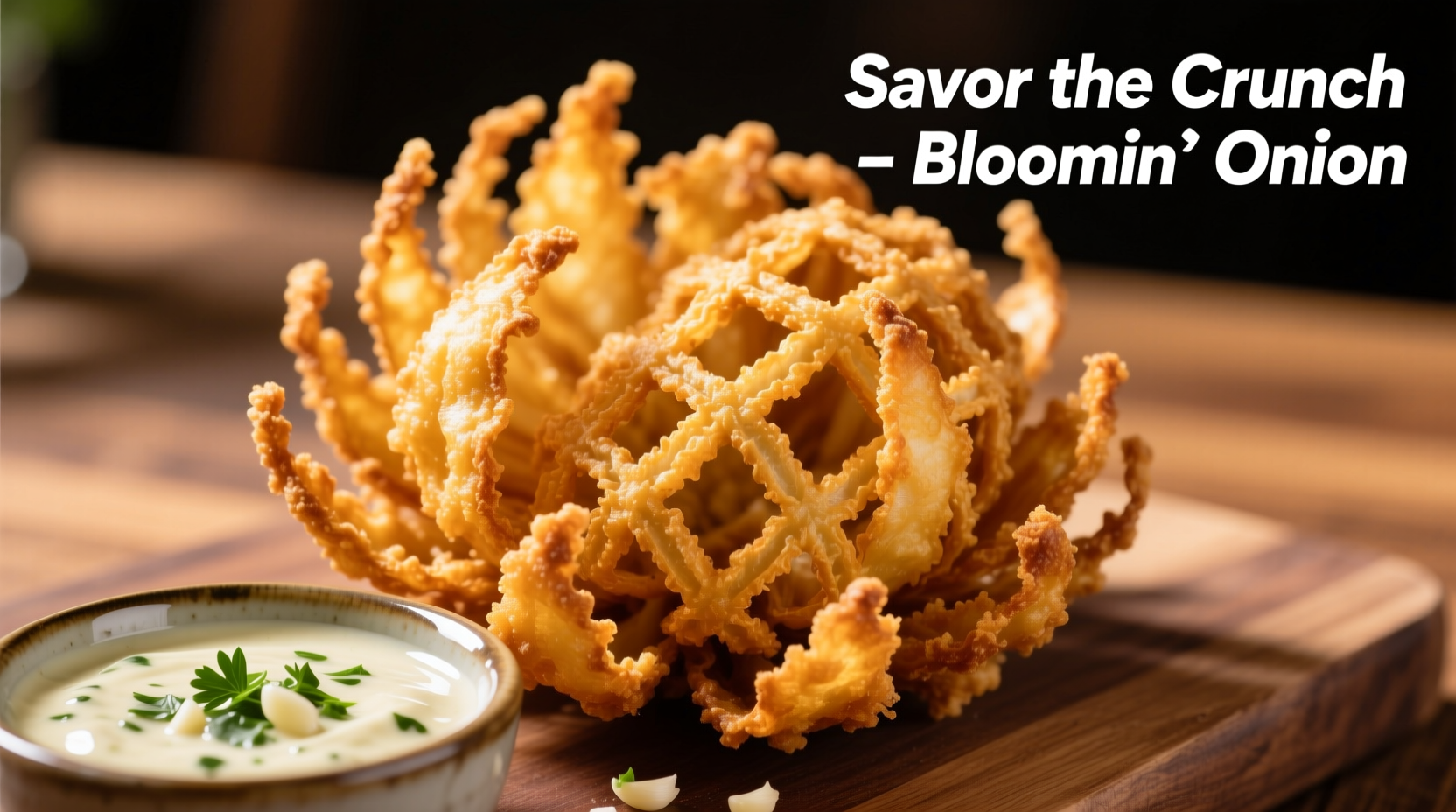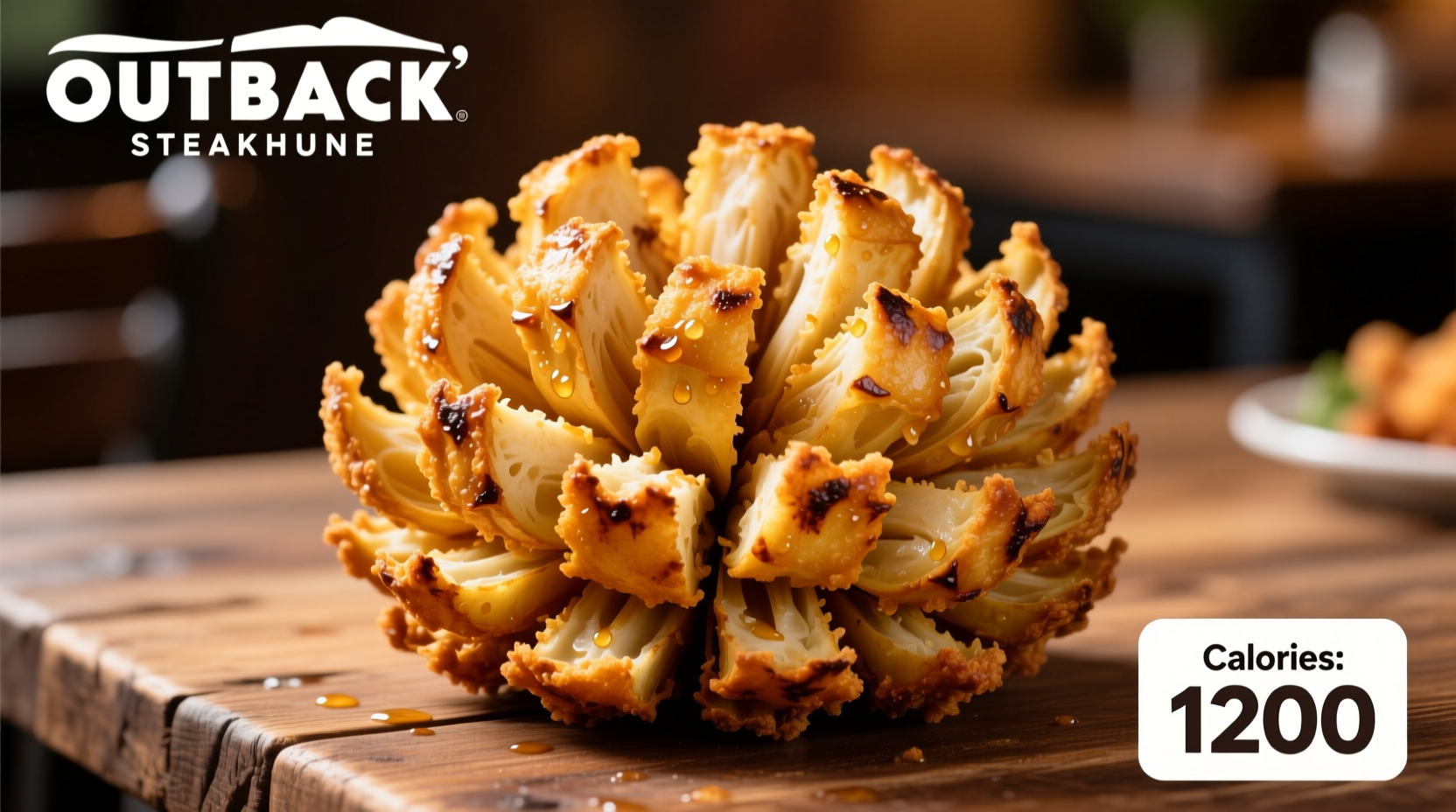When you order that iconic, flower-shaped appetizer at your favorite steakhouse, you're getting more than just a tasty treat—you're consuming a significant portion of your daily calorie budget. The Bloomin' Onion has become a cultural phenomenon since its introduction, but its nutritional profile often surprises diners. Let's break down exactly what you're eating and how to enjoy this indulgence mindfully.
What Makes Up a Bloomin' Onion's Calories
The calorie count in a Bloomin' Onion comes from multiple components working together to create that irresistible crispy, flavorful experience. Understanding each element helps explain why this appetizer packs such a caloric punch.
| Component | Calorie Contribution | Percentage of Total |
|---|---|---|
| Large Sweet Onion | 120-150 calories | 15% |
| Batter and Seasonings | 200-250 calories | 25% |
| Frying Oil Absorption | 350-500 calories | 50% |
| Bloomin' Onion Sauce | 100-150 calories | 10% |
This nutritional breakdown comes from USDA FoodData Central analysis of standard restaurant preparation methods and Outback Steakhouse's published nutrition information. The frying process is the biggest contributor to the high calorie count, as the battered onion absorbs significant oil during deep frying.
How Bloomin' Onion Calories Fit in Your Daily Diet
For context, the average adult needs about 2,000 calories per day, though individual needs vary based on age, gender, and activity level. Consuming 800-1,100 calories in a single appetizer means:
- You've used 40-55% of your daily calorie budget before your main course
- You'd need to walk approximately 8-11 miles to burn off these calories
- This single appetizer contains more calories than many complete meals
According to dietary guidelines from the American Heart Association, this appetizer also delivers about 50-60 grams of fat (75-90% of daily recommended limit) and 1,500-2,000mg of sodium (65-85% of daily limit). These numbers put the Bloomin' Onion firmly in the "occasional treat" category rather than a regular menu item.

Smart Strategies for Enjoying Bloomin' Onions
You don't have to eliminate this beloved appetizer from your dining experience—you just need smarter approaches:
Portion Control Tactics
Sharing is the simplest strategy. When four people split one Bloomin' Onion, each person consumes only 200-275 calories—a much more reasonable indulgence. Many restaurants now offer "petite" versions with approximately 400-500 calories, making solo enjoyment more feasible.
Pre-Meal Planning
If you know you'll be ordering a Bloomin' Onion, adjust your other meals accordingly. Have a light breakfast and lunch with plenty of vegetables and lean protein to balance your day's intake. Consider ordering a salad as your main course to offset the appetizer's calories.
Homemade Healthier Alternatives
Recreating a lighter version at home gives you control over ingredients:
- Use an air fryer instead of deep frying (reduces oil absorption by 70-80%)
- Make a lighter batter using chickpea flour and spices
- Create a Greek yogurt-based dipping sauce instead of traditional mayo-based sauce
Comparing Bloomin' Onion to Other Popular Appetizers
Understanding how this iconic appetizer compares to other menu options helps put its calorie count in perspective:
- Bloomin' Onion: 800-1,100 calories
- Traditional Mozzarella Sticks (6 pieces): 850-950 calories
- Spinach Artichoke Dip (shared): 600-750 calories per serving
- Shrimp Cocktail (10 pieces): 150-200 calories
- House Salad (no dressing): 50-100 calories
This comparison, based on standard restaurant portions documented in the National Restaurant Association's 2024 menu analysis, shows that while the Bloomin' Onion is high in calories, it's comparable to other popular fried appetizers. The key difference is its serving size—most people consume the entire Bloomin' Onion themselves, while other appetizers are often shared.
Making Informed Choices Without Deprivation
Nutrition isn't about restriction but informed choices. When dining out, consider these practical approaches:
- Ask for sauces on the side to control portions
- Request grilled instead of fried options when available
- Balance indulgent items with vegetable-rich dishes
- Focus on the experience rather than just the food—savor each bite slowly
Remember that occasional indulgences are part of a balanced lifestyle. The key is understanding what you're consuming so you can make choices aligned with your health goals. As culinary expert Antonio Rodriguez notes, "Enjoying restaurant favorites mindfully creates a sustainable approach to dining out that doesn't leave you feeling deprived or guilty."











 浙公网安备
33010002000092号
浙公网安备
33010002000092号 浙B2-20120091-4
浙B2-20120091-4